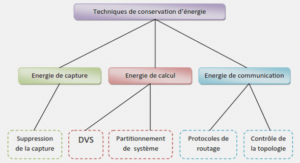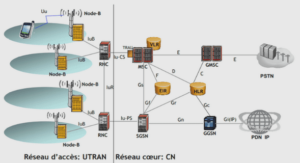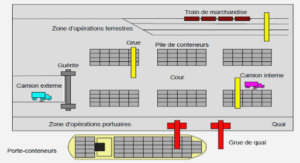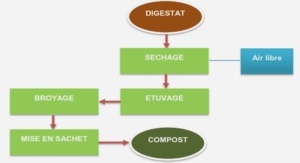Lattice Boltzmann method
The Lattice Boltzmann equation (Chen & Doolen, 1998) is an alternative to the Navier-Stokes equations for simulating fluids in motion by using statistical mechanics. The continuous Boltzmann equation describes the evolution of particle properties, namely mass and energy, using probability distribution functions. In the Lattice Boltzmann method, this equation is discretized and applied at the nodes of a lattice representing particles. Motion is interpreted as a streaming process followed by a collision process. In the continuum limit, a Chapman-Enskog expansion links lattice variables to macroscopic flow variables, leading to the recovery of the incompressible form of the Navier-Stokes equation (Succi, 2001). In relation to aerospace applications, high-fidelity solutions for icing applications have been obtained successfully on airfoils using Lattice Boltzmann solvers (König et al., 2015) and with multiphase flows (Luo, 2000). For complex three-dimensional flows, Lattice Boltzmann solutions are possible, albeit impractical. Drawbacks include tricky boundary conditions, limited gridding schemes, and the difficulty in taking curvature into account. While Lattice Boltzmann techniques appear to have very promising potential, more advancements are needed in the field to increase the practical relevance of the method. Research-oriented open-source codes such as OpenLB (Heuveline & Latt, 2007) and Palabos (Latt) are currently more widespread than commercial codes.
Conclusion on aerodynamic solvers
From the discussions in the previous subsections on the various methods for advanced threedimensional aerodynamic calculations, it is deemed that the most tenable approach for modeling the Hydra S45 Bàalam wing is through the Reynolds-averaged Navier-Stokes equations, both for benchmarking its performance and for optimization processes. They are capable of providing the highest accuracy and most detailed solutions for an associated reasonable computational cost based on knowledge of the computing resources available at the LARCASE and the time frame of the thesis. The development of an advanced RANS CFD tool is also desirable for use in conjunction with computational structural dynamics for future in-depth aeroelastic studies (Beckert, 2000). More computationally demanding techniques would be prohibitively expensive to provide a level of detail in the simulations that is only partly relevant to the study of external aerodynamics.
Surrogate-Based Modeling Simulation-driven engineering has had an increasingly large share of the engineering design process over the last two decades with advances in computing capabilities. Optimization methods applied to lengthy simulations tend to require an inordinate amount of time, which has prompted the development of surrogate modeling (Koziel & Leifsson, 2013). Mathematical approximations are used to estimate the unknown response f of a system for a combination of design variables from known behaviour. The strength of surrogate models lies in their ability to handle the implicitness of f in that f is treated as a black-box function. The mapping between design variables and responses is viewed as a black box to be characterized (Forrester et al., 2008). The availability of a quick predictive model is particularly handy when more than one output or optimization result is of interest.
The simplest surrogates are built using polynomial schemes, for which a first order polynomial is equivalent to linear regression. The polynomial consists of a summed series of terms in the design variables weighted by coefficients estimated using a least squares approach. Polynomial surrogates are very prone to overfitting which may introduce artificial oscillations of the response surface, particularly when high-order terms are used. Higher-order polynomials have a greater the number of weights to be estimated; because more samples than weights are needed to determine these weights, a sufficiently large number of samples is necessary (Stein, 2012). Radial basis functions are an alternative to polynomials to construct surrogates. Functions are used instead of polynomials to estimate f . Artificial neural networks and Gaussian process regression (GPR, or Kriging) are popular algorithms that are built upon radial basis functions. Such methods require hyperparameter tuning, which can be difficult. When hyperparameter tuning for basis function methods is achieved using maximum likelihood theory, the resulting model is called a maximum likelihood scheme (Rasmussen & Williams, 2004).
Artificial neural networks are parametric models while Gaussian process models are nonparametric. In non-parametric models, the model structure is not predefined: parameters can be infinite in number and increase with the number of data points (Härdle, 1990). Non-parametric models perform better in the presence of outliers and non-linearities. Covariance-learning is a strength of all Kriging algorithms, although the use of covariance matrices is a restriction on the maximum size of the data set because of operations such as matrix inversion (Wang, 2016). Training a Gaussian process model generally requires more time relative to an artificial neural network, but is often capable of yielding a more accurate surrogate (Kocijan & Petelin, 2011). In conclusion, Gaussian process models are chosen to develop surrogate models in subsequent chapters because they appear to provide more flexibility for working with results obtained through numerical simulations, which are inherently affected by numerical errors.
Winglets are wingtip devices used on fixed-wing aircraft to reduce the drag contribution of wingtip vortices. Total drag on a three-dimensional body comprises parasite drag and induced drag. For a flying wing in a low-speed subsonic regime, the parasite drag sources are only skin friction drag and pressure drag, which, together, are also called the profile drag. Winglets target induced drag due to tip vortices in particular. Tip vortices are a result of flow leakage at the wing tips. A pressure imbalance between the upper and lower surfaces of the wing is set up because the flow is deflected inwardly on the upper surface, or pressure side, and outwardly on the lower surface, or suction side, leading to the formation of a vortex (McLean, 2012). This pressure difference, while necessary for the generation of lift, also causes air from the suction side to flow to the pressure side, thereby reducing the effective angle of attack. The lift vector becomes tilted, giving rise to a force component in the opposite direction of the flow called the induced drag (Anderson Jr, 2010). Research on wingtip devices began in the 1970s at NASA with the experimental testing of end plates to reduce the intensity of tip vortices (Hemke, 1928; Mangler, 1938) before modern-day winglets. Whitcomb (1976, 1981) pioneered winglet research by proposing and publishing results for his designs, in which he defined geometric parameters to characterize winglet shape, such as cant, taper, sweep, and toe-out angle.
Promptly after Whitcomb’s propositions, Heyson et al. (1977) used a vortex lattice method to conduct a parametric study on winglet performance, where they established that, for a given increase in bending moment, a greater reduction in induced drag could be achieved by using a winglet rather than extending the wing tip. They concluded that winglets provide the highest improvement for near-vertical geometries and for high wing loadings near the wing tip. As the technology readiness level of winglets evolved, numerous patents were filed for novel concepts aimed at wingtip vortex intensity reduction. These patents include blended winglets to eliminate junction discontinuity and vortex concentration at the dihedral corner (Finch, 1978), movably mounted winglets to control the angle of attack and bending moment (Daude, 1984), highly sweptback winglets with low aspect ratio to prevent flow break-away at high lift coefficients (Jupp & Rees, 1987), spiroid wingtips that loop until they fall back onto the wing (Gratzer, 1992), elliptical winglets to enforce continuous curvature (Felker, 2002), and multi-winglet variants to attempt to further break down the wingtip vortex (La Roche & Palffy, 1996; Smith et al., 2001). Winglet design garnered attention from sailplane designers such as Maughmer (2003, 2006), who used a multiple lifting-line method and a full panel method with relaxed-wake modeling in his works. He concluded that winglet design is a trade-off study because a reduction in induced drag is achieved for a larger wetted area, which is in turn accompanied by an increase in profile drag.
|
Table des matières
INTRODUCTION
CHAPTER 1 BACKGROUND AND LITERATURE REVIEW
1.1 3D Computational Aerodynamics
1.1.1 Lifting line theory
1.1.2 Lifting surface theory
1.1.3 Panel methods
1.1.4 Navier-Stokes solvers
1.1.5 Lattice Boltzmann method
1.1.6 Conclusion on aerodynamic solvers
1.2 Optimization Techniques
1.2.1 Local optimization algorithms
1.2.2 Global optimization algorithms
1.2.3 Conclusion on optimization techniques
1.3 Surrogate-Based Modeling
1.4 Subsonic Aerodynamic Performance of Aircraft Wings
1.4.1 Geometric parameters
1.4.1.1 Aspect ratio
1.4.1.2 Taper ratio
1.4.1.3 Sweep angle
1.4.1.4 Twist angle
1.4.2 Winglets
1.4.3 Performance parameters
1.4.3.1 Range
1.4.3.2 Endurance
1.4.4 Morphing Wings
CHAPTER 2 COMPUTATIONAL TOOLS
2.1 Outline
2.2 Reynolds-Averaged Navier-Stokes Solver
2.2.1 Governing equations
2.2.1.1 Conservation of mass
2.2.1.2 Conservation of momentum
2.2.2 Reynolds averaging
2.2.3 Boussinesq hypothesis
2.2.4 Turbulence modeling
2.2.5 Transition modeling
2.2.6 Computational grid
2.2.7 Boundary conditions
2.3 Gaussian Processes
2.3.1 Gaussian process regression models
2.3.1.1 Noise-free formulation
2.3.1.2 Noisy formulation
2.3.2 Covariance functions
2.3.2.1 ARD squared exponential kernel
2.3.2.2 ARD Matérn kernel
2.3.2.3 ARD rational quadratic kernel
2.3.3 Hyperparameter optimization
2.3.4 Performance metrics
2.3.5 Optimization using expected improvement
CHAPTER 3 AERODYNAMIC PERFORMANCE OF THE ORIGINAL WING
3.1 Geometric Representation
3.2 Representation of the Upswept Blended Winglet
3.3 Flight Conditions
3.4 Computational Approach
3.5 Results
3.6 Conclusions
CHAPTER 4 AERODYNAMIC OPTIMIZATION OF THE ORIGINAL WING
4.1 Wing Parametrization
4.2 Optimization Bounds
4.3 Training Set
4.4 Objective Functions
4.5 CFD Implementation
4.6 Kernel Selection and Model Validation
4.6.1 Regression model for range optimization
4.6.2 Regression model for endurance optimization
4.7 Optimizer Settings
4.8 Results
4.9 Conclusions
CHAPTER 5 MORPHING WING AERODYNAMIC OPTIMIZATION
5.1 Morphing Approach
5.2 Optimization Bounds
5.3 Training Set
5.4 Objective Functions
5.5 CFD Implementation
5.6 Kernel Selection and Model Validation
5.6.1 Regression model for range optimization
5.6.2 Regression model for endurance optimization
5.7 Optimizer Settings
5.8 Results
5.9 Conclusions
CONCLUSIONS
RECOMMENDATIONS
APPENDIX I TRAINING SET FOR GLOBAL WING AERODYNAMICS
APPENDIX II TRAINING SET FOR MORPHING WING AERODYNAMICS
BIBLIOGRAPHY
![]() Télécharger le rapport complet
Télécharger le rapport complet






